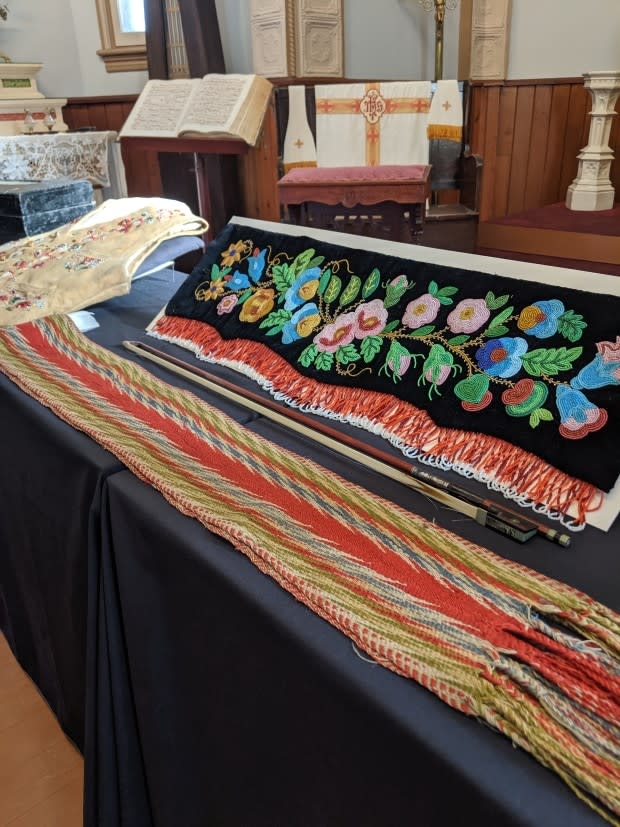More than a fashion statement, the Métis sash was like 'Batman's utility belt'
When it comes to Métis culture and symbols, there are few things that stand out quite like the sash. But what is the history behind it? And what is its significance to Métis people today?
CBC Indigenous met up with a couple of Métis historians to find out.
"Sashes to me, tell stories… whether it's done on a loom.. or finger weaving, to me they're always telling a story," said Teresa Byrne.
Byrne is the Métis cultural and tour co-ordinator at the Manitoba Métis Federation's Louis Riel Institute.
She said that wearing a sash today shows Métis pride in their heritage.
"I am a proud Métis woman and to wear this sash is not just for Festival de Voyageur, but for different events. To me, it's honouring my nation and being proud of who we are instead of hiding," said Byrne.
Sashes used for practical purposes
Although the sash is not exclusive to Métis people, the Metis adopted the usage of the L'Assomption sash, which was named after the Quebec town where they were produced.
According to Byrne, the sash wasn't used just for fashion or to hold a person's pants up.

Back in the early days of the Métis, they were used for many day to day activities on the prairies.
"When I do my teachings on a sash, I explain that it's almost like a Batman utility belt," said Byrne.
"Back then they would wear it around their stomachs because most men died of hernias, so it became a weight belt."
She said that sashes were also used as tourniquets, for sewing, storing pemmican and also for holding chest keys.
"Voyageurs going out for months at a time would have their big trunk keys on their sashes almost like a key chain," said Byrne.

According to Byrne, the colours of the sashes also represented a person's employer affiliations during the fur trade.
"When you worked for the Hudson's Bay Company, you received a red sash. If you worked for the Northwest Company, you received a blue sash," said Byrne.
Blending of colours
Byrne said the Métis eventually blended the two colours and created their own sashes.
"With the Métis, they were very smart. They knew their trades. And so for them to create coloured sashes and to become free men… that was big back then."
Over the years, Byrne has gathered a personal collection of sashes, both buying them and making them herself.
She learned how to use an inkle loom to create custom sashes and has been making them for organizations like the University of Winnipeg and University of Manitoba and also makes them for individuals.
When asked to make them, she asks people about their life experiences and what their interests and favourite colours are.
Her own personal favourite? The one she made for her spouse.
It incorporates the Peguis First Nation flag and also the Two Row Wampum belt to honour his Mohawk heritage

Riel's sash at the St. Boniface Museum
The St. Boniface Museum is the oldest building in Winnipeg and is home to many historical Métis artifacts, such as the sashes of prominent Métis leaders including Louis Riel.
Since 2008, the province of Manitoba has celebrated Louis Riel Day on the third Monday of February. Earlier this week, it was announced that the admission to the St. Boniface Museum would be open to the public for free, as part of the Manitoba 150 celebrations.

For museum director Vania Gagnon, Louis Riel Day is an opportunity to celebrate not only Riel, but also the community of Métis people that surrounded the leader.
"[Riel] didn't operate in a vacuum. He had colleagues, he had friends, cousins, alliances and so it's really that community that was here, that really vibrant cultural community that we know as the Métis," said Gagnon.
The MMF will be partnering with the St. Boniface Museum to host their annual Louis Riel Day event on Monday at the museum from noon till 4 p.m.


